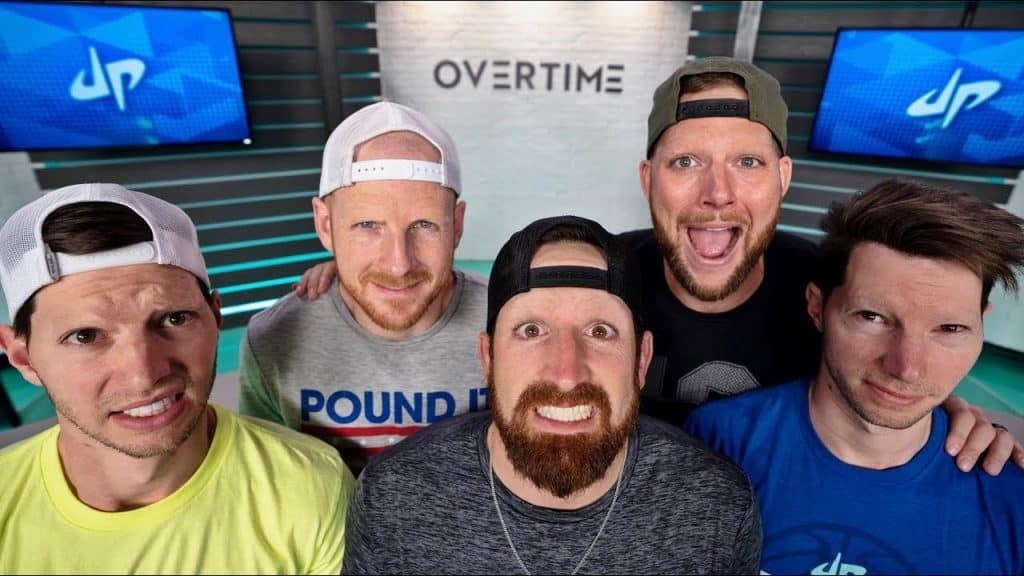In the constantly evolving landscape of digital advertising, marketers and brands are always on the lookout for effective ways to reach their target audience. YouTube, as one of the largest online video platforms, offers a variety of advertising options.
One of these is YouTube Select (formerly known as Google Preferred), a premium service that allows advertisers to target ads to top-performing channels and content.
In this article, we will explore YouTube Select, compare it with normal adverts, and provide insights on how to use and become part of this premium service.
What is YouTube Select?
YouTube Select is an advertising program that enables brands to place their ads on the top 5% of YouTube channels based on popularity, engagement, and content quality.
These channels are grouped into 12 categories, allowing advertisers to focus on specific target audiences. YouTube Select lineups are human-verified, ensuring brand safety and alignment with advertiser values.
Benefits of YouTube Select
- Access to premium content: Advertisers can place their ads on highly popular and engaging content, which increases the likelihood of reaching their target audience.
- Improved targeting: With 12 distinct categories, advertisers can select the lineup that best matches their target audience’s interests.
- Brand safety: YouTube Select’s human verification process ensures that ads are placed alongside content that aligns with brand values and guidelines.
- Exclusive opportunities: YouTube Select offers sponsorships and programs, such as YouTubeOriginals, which provide additional avenues for brand promotion and visibility.

Comparing YouTube Select and Normal Adverts
To better understand the difference between YouTube Select and normal adverts, let’s take a look at some key aspects:
| Aspect | YouTube Select | Normal Adverts |
|---|---|---|
| Content Quality | Top 5% of channels based on popularity, engagement, and quality | All YouTube channels (subject to YouTube’s ad guidelines) |
| Targeting | 12 distinct categories for precise targeting | Broad targeting based on demographics, interests, and behaviours |
| Brand Safety | Human-verified content for brand alignment | Algorithm-based content filtering |
| Ad Formats | Various formats including sponsorships and programs | Standard formats like TrueView, Bumper ads, etc. |
| Cost | Typically higher due to premium content access | Lower, based on auction and targeting parameters |
How to Use YouTube Select
To start using YouTube Select, follow these steps:
- Sign up for a Google Ads account, if you don’t already have one.
- Create a new campaign and choose the “Video” campaign type.
- In the “Placements” section, select “YouTube videos” or “YouTube channels.”
- Search for the YouTube Select lineup you want to target, and add it to your placements.
- Set your targeting preferences, budget, and other campaign settings.
- Create or upload your video ad, and submit it for review.
- Once your ad is approved, your campaign will go live, and your ads will be served on the selected YouTube Select channels.
How to Be Included in YouTube Select
To have your channel considered for inclusion in YouTube Select, focus on the following aspects:
- Content quality: Produce engaging, high-quality content that resonates with your target audience. This will help increase your channel’s popularity and overall performance.
- Consistency: Maintain a consistent posting schedule, ensuring that your viewers have a reason to keep coming back to your channel.
- Audience engagement: Encourage comments, likes, and shares by engaging with your audience and creating content that invites interaction.
- Advertiser-friendly content: Ensure your content complies with YouTube’s ad guidelines and does not contain any controversial or inappropriate material.
- Channel optimization: Optimize your channel by using relevant keywords, tags, and descriptions to increase visibility and discoverability.
Although there is no direct application process for YouTube Select, focusing on the above aspects will increase your chances of being noticed by YouTube and included in their premium lineups.
Useful Tips – Get The Most From YouTube Select
- Research your target audience: Understand your audience’s preferences, interests, and online habits to create content that resonates with them and increases engagement.
- Collaborate with other creators: Partner with other YouTube creators to expand your reach and tap into new audiences. Collaborations can help both channels grow and increase the likelihood of being included in YouTube Select.
- Leverage analytics: Regularly review your YouTube analytics to identify trends, patterns, and areas for improvement. Use this data to optimize your content strategy and enhance your channel’s performance.
- Invest in video production: High-quality videos are more likely to engage viewers and keep them watching. Invest in good equipment, editing software, and production techniques to create visually appealing content.
- Promote your channel: Utilize social media, email marketing, and other promotional tactics to increase visibility and drive traffic to your YouTube channel. This will help grow your audience and improve your channel’s performance.
- Stay updated on platform changes: Keep up-to-date with YouTube’s policies, guidelines, and feature updates to ensure your channel remains compliant and takes advantage of new opportunities.
YouTube Select vs. Normal Adverts: Harnessing the Power of Preferred Advertising
YouTube Select offers a powerful advertising solution for brands looking to reach a highly engaged audience through premium content.
By comparing YouTube Select with normal adverts, advertisers can make an informed decision about the best advertising approach for their specific needs.
By following the steps outlined in this article, brands can harness the power of YouTube Select, while content creators can improve their chances of being included in this premium service. With the right strategy, both advertisers and creators

Deep Dive Q&A: YouTube Select, YouTube Advertising, and Influencer Marketing
Q1: What is the primary difference between YouTube Select and normal YouTube advertising?
A: YouTube Select targets ads on the top 5% of YouTube channels based on popularity, engagement, and content quality. These channels are grouped into 12 categories, allowing advertisers to focus on specific target audiences. In contrast, normal YouTube advertising is available across all channels (subject to YouTube’s ad guidelines), offering a broader range of targeting options based on demographics, interests, and behaviors.
Q2: Can small businesses benefit from using YouTube Select?
A: Yes, small businesses can benefit from using YouTube Select if they have a well-defined target audience and wish to access premium content to maximize ad exposure. However, the cost of YouTube Select may be higher than normal YouTube advertising, so small businesses should weigh the benefits against their marketing budget.
Q3: How can a content creator optimize their channel for YouTube Select?
A: Content creators can optimize their channel by focusing on content quality, consistency, audience engagement, advertiser-friendly content, and channel optimization through relevant keywords, tags, and descriptions.
Q4: What are the most popular ad formats on YouTube?
A: Some popular YouTube ad formats include TrueView In-Stream ads, TrueView Discovery ads, Bumper ads, and Non-Skippable In-Stream ads. YouTube Select also offers exclusive sponsorship and program opportunities, such as YouTube Originals, for enhanced brand promotion and visibility.
Q5: How can advertisers measure the success of their YouTube campaigns?
A: Advertisers can measure the success of their YouTube campaigns by tracking key performance indicators (KPIs) such as views, watch time, impressions, click-through rate (CTR), view-through rate (VTR), cost per view (CPV), and conversions. YouTube provides a comprehensive analytics dashboard to monitor these metrics, allowing advertisers to optimize their campaigns accordingly.
Q6: How does influencer marketing tie into YouTube advertising?
A: Influencer marketing is an advertising strategy that involves partnering with influential individuals, often YouTube creators, to promote a product or service. Brands can leverage influencers’ existing audience and credibility to reach new customers, making it an effective complement to other YouTube advertising methods.
Q7: What factors should brands consider when choosing a YouTube influencer?
A: Brands should consider the influencer’s relevance to their target audience, the size and engagement level of their audience, content quality, and past performance of similar collaborations. It’s essential to select an influencer whose values align with the brand’s image and goals.
Q8: What are some tips for a successful influencer marketing campaign on YouTube?
A: Some tips for a successful influencer marketing campaign on YouTube include setting clear goals and expectations, providing creative freedom to the influencer, establishing a fair compensation structure, tracking and measuring the campaign’s performance, and maintaining open communication throughout the collaboration.
Q9: How can I ensure my YouTube ads comply with the platform’s guidelines?
A: To ensure your ads comply with YouTube’s guidelines, familiarize yourself with the platform’s ad policies, which cover content, targeting, and data usage. Avoid any content that violates these policies, and when in doubt, seek clarification from YouTube or consult their Help Center.
Q10: What are some best practices for creating engaging YouTube ads?
A: Some best practices for creating engaging YouTube ads include:
- Grabbing the viewer’s attention within the first few seconds
- Keeping the ad concise and to-the-point
- Telling a compelling story that resonates with your target audience
- Using high-quality visuals and audio
- Including a clear call-to-action (CTA)
- Testing different ad variations to optimize performance
Q11: How can I target my ads more effectively on YouTube?
A: To target your ads more effectively on YouTube, you can use a combination of demographic targeting (age, gender, parental status), interest targeting (affinities, custom affinity audiences, life events), and placement targeting (specific channels, videos, or YouTube Select lineups). Regularly reviewing your campaign’s performance and adjusting your targeting parameters can help you reach your desired audience more effectively.
A: Brands can manage their YouTube advertising budget effectively by:
- Setting clear goals and objectives for their campaigns
- Allocating funds based on priority and potential return on investment (ROI)
- Regularly monitoring and optimizing campaign performance
- Testing different ad formats, targeting options, and bidding strategies to find the most cost-effective approach
- Utilizing YouTube’s daily budget and bid cap options to control spending
Q13: What role do keywords play in YouTube advertising?
A: Keywords play a crucial role in YouTube advertising by helping advertisers target their ads based on the user’s search queries and the content they consume. Proper keyword research and selection can improve the relevancy and effectiveness of your ads, ensuring they reach the right audience.
Q14: How can I effectively promote my YouTube channel organically?
A: To promote your YouTube channel organically, focus on:
- Producing high-quality, engaging content that resonates with your audience
- Optimizing your channel and video metadata with relevant keywords, tags, and descriptions
- Encouraging viewer interaction through comments, likes, and shares
- Collaborating with other creators to expand your reach
- Sharing your content across social media platforms and other marketing channels
Q15: Can I use remarketing to improve my YouTube advertising campaigns?
A: Yes, you can use remarketing to target viewers who have previously interacted with your channel, videos, or ads. This allows you to re-engage users who have shown interest in your content, products, or services, increasing the likelihood of conversions. By creating remarketing lists in Google Ads, you can tailor your campaigns to specific segments of your audience, making your advertising efforts more relevant and effective.









































